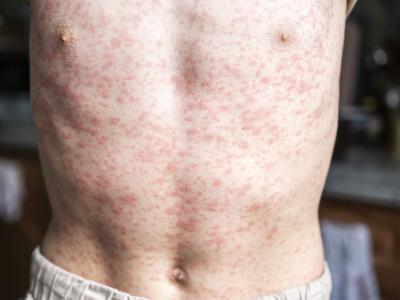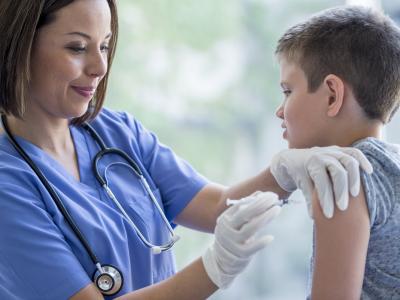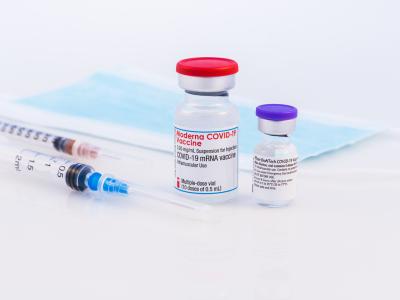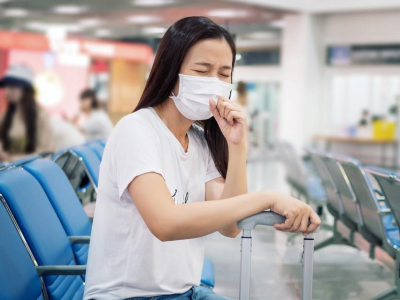Apr 9, 2008 (CIDRAP News) – A 52-year-old Chinese man probably caught H5N1 avian influenza from his dying son while caring for him in a hospital last December, but others who had close contact with both patients were not infected, Chinese researchers reported this week in The Lancet.
The two cases represent another example of probable but limited person-to-person transmission of the Asian H5N1 virus. The article comes on the heels of the World Health Organization's (WHO's) report last week that two brothers who were part of a family cluster of suspected H5N1 cases in Pakistan last fall had the virus.
"We believe that the index case transmitted H5N1 virus to his father while his father cared for him in the hospital," says the Lancet report by a mostly Chinese team led by Hua Wang of the Jiangsu Provincial Centre for Disease Control and Prevention in Nanjing, China. The team found no other plausible source of infection for the father and no evidence that the virus spread to anyone else.
Though the 24-year-old son died, his father recovered. The older man's treatment included double-dose oseltamivir (Tamiflu) starting early in the illness and a blood plasma transfusion from a woman who had received an H5N1 vaccine in a clinical trial, suggesting the possibility that vaccine-induced antibodies in the woman's plasma played some role in his recovery.
Bacterial infection clouded picture
The younger man became ill with a fever on Nov 24, though he had had occasional chills and sweats for 3 months before that. He was hospitalized Nov 28, and the next day a blood culture showed an infection with Salmonella choleraesuis, which causes swine paratyphoid and occasionally infects humans. This finding prompted treatment with antibiotics and delayed the diagnosis of H5N1, the report says. The man's condition deteriorated, and he died on Dec 2, his fifth day in the hospital. H5N1 was detected in an endotracheal sample taken just before he died.
The father fell ill with a fever and cough on Dec 3, the day after his son died, and the same evening he took a dose of oseltamivir that had been given to the son's contacts for protection from the virus. He was hospitalized the next day with fever and pneumonia. He was treated with 150 mg of oseltamivir twice daily—twice the standard dosage—plus levofloxacin and corticosteroids. Treatment with rimantadine, an older influenza drug, was added a day later.
The man's condition worsened despite these treatments, and on Dec 7 he was given two plasma transfusions from a 30-year-old woman who had received two doses of a whole-virus H5N1 vaccine in a phase 1 clinical trial. The patient's fever resolved that night; he gradually recovered and was discharged after 22 days in the hospital. The H5N1 virus was found in a sample taken on the fourth day of his illness.
The son had had no known contact with live poultry or sick people in the 2 weeks before his illness, investigators found. He bought freshly killed pork at a market 6 days before he got sick but had not gone near where live poultry were sold, his girlfriend reported.
After the 24-year-old became ill, his father had close contact with him five times, which included providing "unprotected bedside hospital care" between Nov 27 and 29, when the younger man had a cough and watery diarrhea. The father had had no reported contact with live poultry and had no other known exposures to the virus. No poultry outbreaks were reported before or after the two human cases, and testing of poultry, wild birds, and surfaces in poultry markets in Nanjing in early December revealed no signs of the virus.
Gene sequencing showed that the viruses from the two patients were identical except for one nucleotide substitution in the NS gene, the report says. Both isolates were classified as clade 2.3.4 viruses, and all genes were of avian origin.
100 contacts monitored
The authors found no evidence that the two men spread the virus to any other contacts. The researchers identified 100 close contacts, including 77 healthcare workers, and monitored them for 10 days. Two of the contacts, the son's girlfriend and a doctor, got sick with a fever during that period, but they tested negative for the H5N1 virus. Further, serum samples from 91 contacts who agreed to testing showed no evidence of H5N1 antibodies.
"Our conclusion that limited, non-sustained person-to-person transmission of H5N1 virus probably occurred in this family cluster does not imply that H5N1 viruses have attained the ability to transmit more efficiently in human beings," the authors write. Despite the existence of some evidence about the virus's ability to bind to human cell receptors, they add, "Viral characteristics required for sustained person-to-person H5N1 virus transmission remain unknown."
The report says the H5N1 vaccine received by the woman who gave plasma for treating the father was based on a clade 1 virus collected in Vietnam in 2004. In tests, the plasma showed "fairly low cross-reactivity" with the clade 2.3.4 virus from the two patients, according to the study. Despite this, the authors say the father's recovery, along with one previous case in which an H5N1 patient recovered after receiving plasma from an H5N1 survivor, justify further research.
Though there were no controls in either case, "survival of both cases warrants research into antiviral treatment combined with passive immunotherapy for individuals infected with H5N1 virus," they write.
Genetic susceptibility?
In an accompanying Lancet commentary, three disease specialists from Vietnam—Nguyen Tran Hien, Jeremy Farrar, and Peter Horby—note that most H5N1 case clusters—like the Chinese one—have involved blood relatives, suggesting the possibility of some genetic susceptibility to the virus.
"Studying both within-host virus diversity and host genetic diversity might help to clarify the nature of the species barrier and the conditions necessary for widespread transmission between people," the three write. "These studies are hard to do and need sustained, coordinated, and collaborative efforts, as in Wang and colleagues' study. . . ."
The team of authors for the study included an epidemiologist with the US Centers for Disease Control and Prevention. Given the often acrimonious debates about international collaboration in fighting infectious diseases, the commentary writers say, "Today's study is a superb piece of epidemiological work showing the benefit of a longstanding and trusting international collaboration that began during the severe acute respiratory syndrome [SARS] epidemic."
Wang H, Feng Z, Shu Y, et al. Probable limited person-to-person transmission of highly pathogenic avian influenza A (H5N1) virus in China. Lancet 2008;371 (early online publication) [Abstract]
Hien NT, Farrar J, Horby P. Person-to-person transmission of influenza A (H5N1). (Commentary) Lancet 2008;371 (early online publication)
See also:
December 2007 WHO statements on the two Chinese cases
http://www.who.int/csr/don/2007_12_04/en/index.html
http://www.who.int/csr/don/2007_12_09/en/index.html
Sep 8, 2006, CIDRAP News story "Could blood from H5N1 survivors help others?"
Letter in Oct 4, 2007, New England Journal of Medicine about H5N1 patient who was treated with plasma from a recovered H5N1 patient
http://content.nejm.org/cgi/content/full/357/14/1450



















